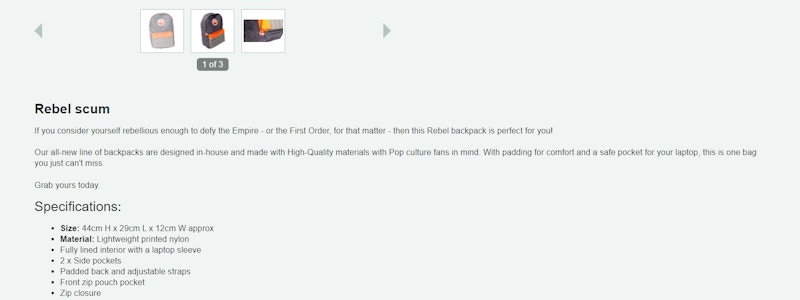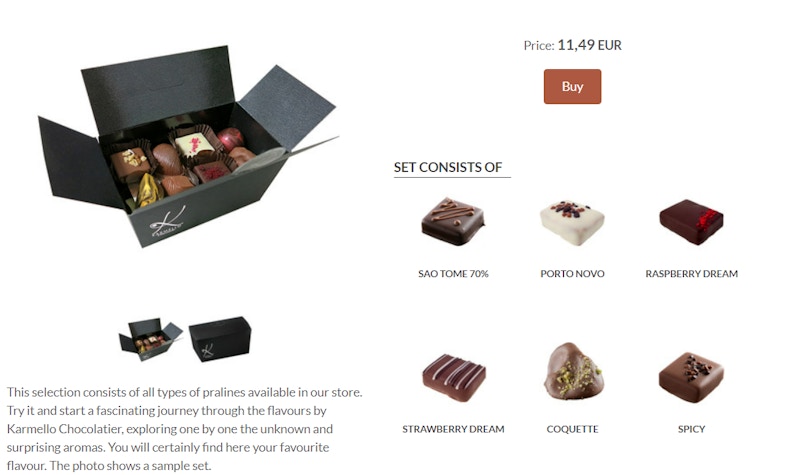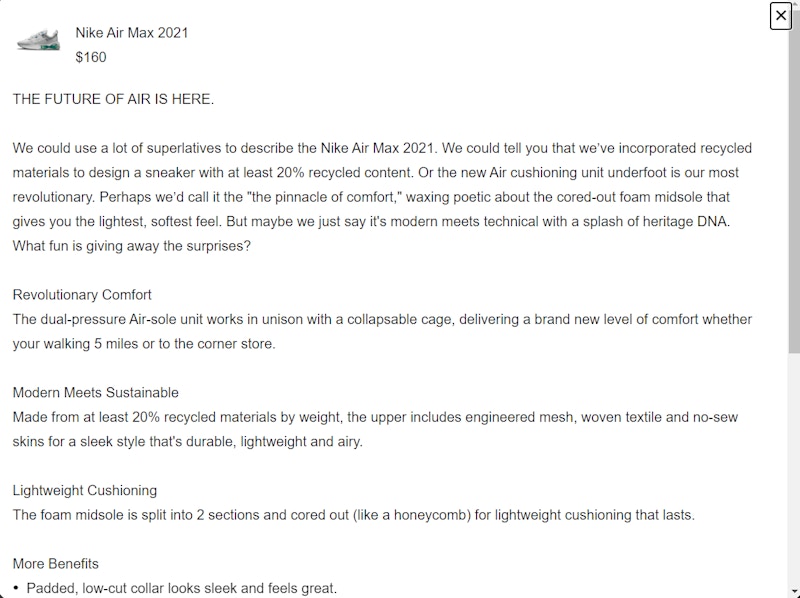How to Write E-Commerce Product Description: Tips for Convincing Online Shoppers
What is a Product Description?
The product description is a marketing copy used to describe the product and outline its benefits. Here e-commerce sellers provide all the necessary information to persuade readers and turn them into buyers.
The best product description
- Highlights features and benefits
- States why the product is the best option
- Indicates the problem it solves
Why Are Product Descriptions Important for E-commerce Stores?
Understanding product description is key to success for online retailers. How you write this simple but powerful piece of content will make the difference between a successful listing and a listing that fails. Product descriptions are all about drawing eyeballs to your website.
The urge to sell + the sauce of creativity are game-changers when it comes to influencing.
What is the Optimal Size of Product Descriptions of E-commerce?
You can fit product descriptions in even one-two sentences too. There is no restriction when it comes to magic writing, but we recommend not exceeding 400 words.
However, it depends on the product specifics. Some may require even more, but you have to put maximum effort to produce a scannable and readable copy.
Without a good copy, your product will struggle to sell. No matter how good your product or web design is.
Why Do Sales Drop If You Don't Have a Good Product Description?
Good product descriptions help potential buyers understand what the product is and if it's something they relish. Product description gives them more confidence in buying the goods. Is a person is not informed enough about what they are buying? Then they might end up with a product that doesn't meet their expectations.
The more information the potential buyer has about the product, the better they'll be at knowing. So, product descriptions make sure your customers grasp what they're getting.
Product descriptions do their job to:
- Qualify
- Persuade
- Convert
Tips to Write an Effective Product Description that Converts
Define Personas and Speak the Language of your Audience
Search for similar product reviews on Amazon and discover phrases your customers use. Communicate with customers, as they do with each other, and you will earn their trust.
When writing for a general audience, the process becomes chaotic and hard to carry on. Instead, you should draw a picture in your head of ideal buyers and try to imagine the world in their eyes. Speak with them conversationally and use the preferred phrases.
Try to break the personal buyers and use "you" while writing. Picture yourself communicating with a customer in a store, and write your thoughts into the section. Try this method and integrate it into your product description, which replicates the real conversation into the virtual shop.
You can't just speak in a foreign language and expect the audience to understand what you're saying. It's best to know ahead of time what people speak. You should delve into the following issues considering buyer personas:
- What are the demographics of my audience? (gender, age, etc.)
- What benefits would intrigue them most?
- What words could they use?
- What words would they avoid?
- Are they okay with using informal or slang language?
Detect a Writing Tone
When writing, be sure to moderate your tone according to product or buyer persona. After examining buyer personas, it's time to define our tone of voice.
Focus on the values, talking style, and other defined elements. Try to convey them through a unique and authentic voice. Finding your voice is not something that happens overnight, and to truly create a connection with customers, you need to be consistent in what you say. Some companies may use humor, while others may use a serious tone.
For example, Zing Pop Culture x-rays their audience well.

Star war fans admire the trilogy and love the descriptions that encourage them. They may like to consider themselves rebellious, like their favorite characters.
5W Formula: Who, What, Where, When, Why
5W+H is a technique used in journalism and researches to cover information versatile. You can effectively incorporate the method to create a comprehensive product description.
- What are the product and details- Highlight the basic features, materials, and functions.
- Why should you buy the product- Think about the benefits that out shadows the competition and bring value for the money.
- When should you use the product- Indicate the situation where using a product make sense. The question is niche-specific. For example, the beauty seller indicates the usage frequency of the product. While Smartphone retailers can outline the feature of camera and state: Capture never-repeatable moments with 4K Camera
- How does the product work?- Not every product requires answering this question, but for others, it's the never-missing part.
- Who is the user of the product?- We are going back to the buyer personas again. That's why none should question the significance of defined personas. Here we define demographics, lifestyle, and all the necessary attributes to later adopt it in our copy.
- Where should you use the product?- Again, it's industry and niche-related. Some products must stay away from the sun. Others are meant to use outdoors, like fireworks.
SEO
Above all of that, you should try to keep your e-shop optimized. SEO optimization is the best trick to attract free traffic and improve your visibility.
Benefits > Features
We all have to agree that customers don't care about super-exciting and niche-related features. Over-using it can mess your text up and lose sight of your customer. So the key is to think with customers' heads. They are investing money to get actual benefits, simplifying and entertaining their daily lives.
As a seller, you pay great attention to the features because they make the product benefit able. That's 100% true, but the trick is to emphasize benefits. Ditch features and describes how the product makes a customer feel.
So try to brainstorm the valuable features and think about what benefits they can get to shoppers. For example, The feature of a sneaker is a flexible sole and the benefit, comfort.
So, in the product description, you can write Smoothness in every step. Here you can see the synthesis of features and benefits.
Use Mini-Stories
Storytelling is an art as much as a science. Human beings live through stories. When people look back on life, they take their memories and turn them into a narrative to make sense of it all.
Hit the Sensors
Sensory words are true seducers. They can arouse the urge to buy the product instantly.
Chocolate craving in action!

Prove What You are Saying with Features and Benefits
When facing writer's block in the product description, we tend to overstate. Due to this blurry state, sometimes we may write something like this: The best quality ever, the shoe is never seen before. But for the customer, that does not make any sense. Even if the quality is out of the universe, they will think: "Yeah, that's what everyone says".
Long story short, Avoid it!!!!!
Talk is just a talk without explanation. You will fall in the category of the sellers who don't care about customers and only care about selling.
Therefore, you can bomb the statements like High-Quality Shoes as Nike does.

Nurture Readers Imagination
Let the readers imagine themselves with your product in hand. You have to awaken the desire to own the product. We can present a product as delightful and aspire to own it, as worthless and aspiring to dispose of it. For example, let's think about the small line on sneakers:
It's your life, your rules, and your style. Rock your sneakers wherever you may be.
Explore related posts
16 Tips to Create How-To Guides
People come up with problems and need to find solutions along the way. Internet users ask search en ...
17th September, 2021
5 Things You Should Know Before Writing Blog Interviews
What are Blog Interviews? A blog interview is a discussion involving Questions & Answers. The conten ...
16th September, 2021